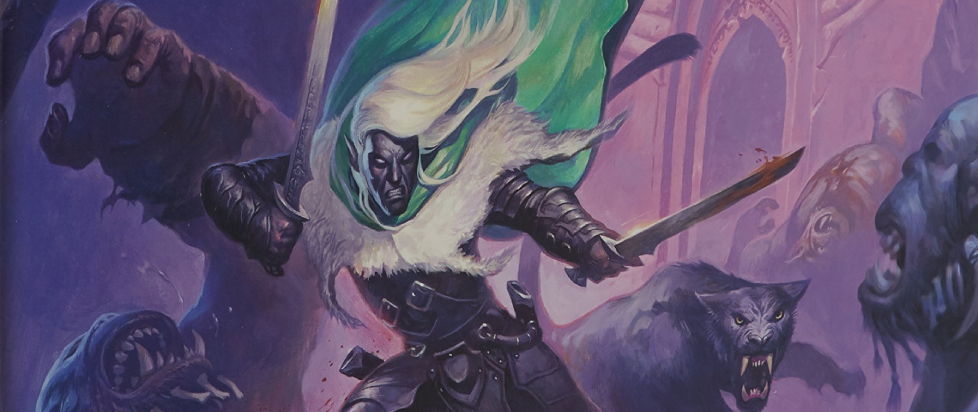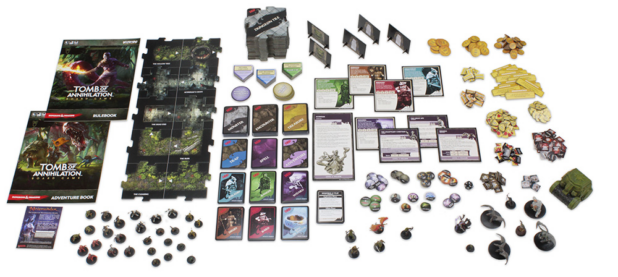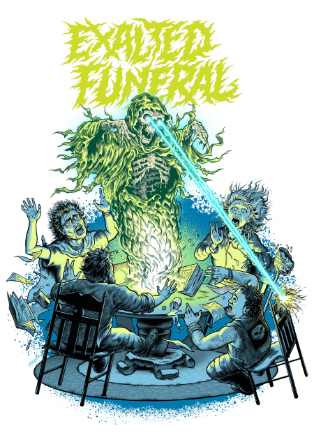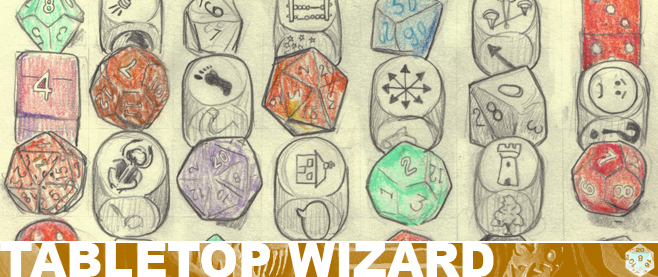
A Maze of Twisty Little Passages, All Alike: Navigating the D&D Adventure System Board Games
I see board games in the store and they always look so cool and then I buy them and bring them home, I’m so excited to open them, and then I play them, like, twice… This column is dedicated to the love of games for those of us whose eyes may be bigger than our stomachs when it comes to playing, and the joy that we can all take from games, even if we don’t play them very often.
The Dungeons & Dragons Adventure System series of board games is something of an oddity in a market saturated with all things D&D. As I’ve mentioned before, there have been attempts to adapt the world’s first tabletop roleplaying game to board game form almost as long as D&D itself has existed – the first edition of Dungeon! came out in 1975, just a year after the release of D&D. The first of these to really look much like what we expect a dungeon crawl board game to look like today hit shelves in 1991, with the release of the so-called “New Easy to Master Dungeons & Dragons.”
Several other iterations followed, including a VHS game and a game accompanied by an audio CD, before WizKids and Wizards of the Coast finally hit upon the formula that they would continue with until literally this very day. The Castle Ravenloft Board Game was the first of the Adventure System games to see print, and it’s still in print – a testament, in both cases, to the popularity of the classic Castle Ravenloft adventures.
Released in 2010, the Castle Ravenloft Board Game came out while D&D was still in the midst of its controversial 4th edition, which means that the rules and aesthetics of the game more accurately match 4th edition expectations than the popular 5th edition of the game, which seems to be everywhere today. And that’s where the oddity comes in.

The genius of the Adventure System game series was that every iteration – from that first release of Castle Ravenloft to the most recent – could be played either standalone or by combining it with other games in the Adventure System series. To date, there are something like a half-dozen standalone Adventure System games, many of them adapting popular D&D adventures, along with at least one expansion (Ghosts of Saltmarsh) that requires one or more of the others to play.
Each one of these (with the exception of Ghosts) is an entirely self-contained game. It has adventures, characters, monsters, etc. But all of the contents of each game can be mixed and matched with all of the others. So, you can play characters from the Castle Ravenloft box in your Tomb of Annihilation adventures, for example, and vice versa.
This promised compatibility comprises much of the selling points for the various games, which makes moving away from it a risky proposition. Thus, we’re still getting board games that feel weirdly like 4th edition, up to what was, at the time of this writing, the most recent expansion, the aforementioned Ghosts of Saltmarsh. This also means that popular 5th-ed adventures (themselves often rehashes of classic D&D adventures) such as Tomb of Annihilation or Dungeon of the Mad Mage get 4e-lite versions in the form of these various board games, and it can be worth some time, for the curious, to compare the 5e adventure with the Adventure System board game to see how they differ.
Each game comes with scads of tokens and cards (as these sorts of games always do), as well as a wealth of miniatures, with usually around 4-6 heroes and plenty of monsters to fight. Most of the time, the miniatures use the same molds as the pre-painted D&D minis that can be bought in blind boxes, though the ones in the board games are done in single-color plastic. (Honestly, the Tomb of Annihilation board game is almost worth the price of admission for its bright-purple version of the Stone Juggernaut miniature, one of the weirder ones in the game.)
They also come with a boatload of dungeon tiles. Anyone who has been following along here for very long knows that dungeon tiles are one of my very favorite parts of any dungeon crawl game, and the ones for the various D&D Adventure System games have their distinctive pluses. They’re almost all uniformly sized, allowing them to be dealt and revealed in order to make the dungeons more random. And they lock together with jigsaw-like pieces, making your revealed dungeon a little more sturdy.

They also have some drawbacks. Mainly that they are, for the most part, boring. The art is fine but it does little to breathe much life into the rooms, and the rooms themselves are mostly as generic as you can imagine. This varies a bit from one game to another, of course. Tomb of Annihilation has some nice outdoor jungle tiles, for example. But for the most part, you’re going to be dealing with dungeons, and the dungeons are going to be endless expanses of fitted stone with little enough to distinguish one room from the next.
I have not personally dug into every one of the half-dozen-or-so Adventure System games, but of those I have experimented with, Wrath of Ashardalon – the system’s second release, and probably its most generically “Dungeons & Dragons,” with the adversary being a classic red dragon – is perhaps the worst offender in this regard, offering a seemingly-endless pile of basically identical tiles filled with flagstones and not much else.
Of course, this is part and parcel to the dungeon crawl, to some extent. Endless flagstone corridors are as old as D&D itself. But plenty of other dungeon crawl games have found better ways to spice them up, over the years. Compare the dull dungeon tiles of the various Adventure System games with any number of other recent releases or even the vivid dungeon board of the original HeroQuest to see the difference.
I guess only time will tell if the D&D Adventure System games find a way to do it better or if Wizards eventually abandons the cross-compatible format for something more in keeping with the popular (and current) 5th edition. In the wake of a disastrous attempt at updating their open gaming license, which blew up in their face more than a little, and with a new D&D movie making its way into theaters by the time this column goes to press, it seems likely that Hasbro and Wizards of the Coast have more pressing things on their minds right now.
———
Orrin Grey is a writer, editor, game designer, and amateur film scholar who loves to write about monsters, movies, and monster movies. He’s the author of several spooky books, including How to See Ghosts & Other Figments. You can find him online at orringrey.com.





